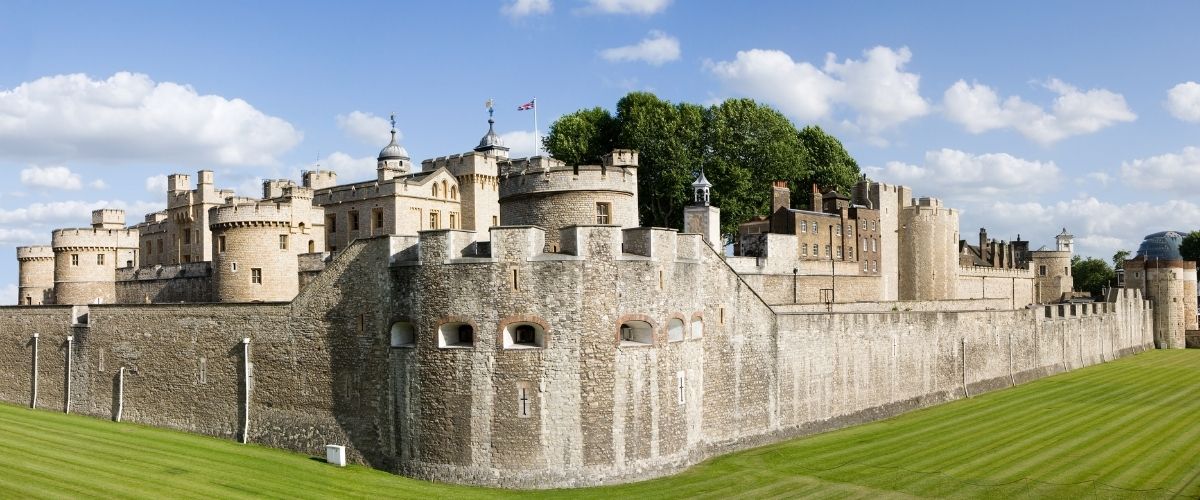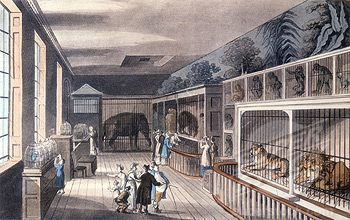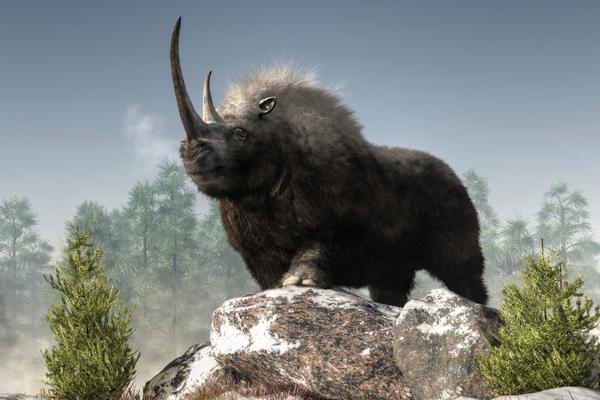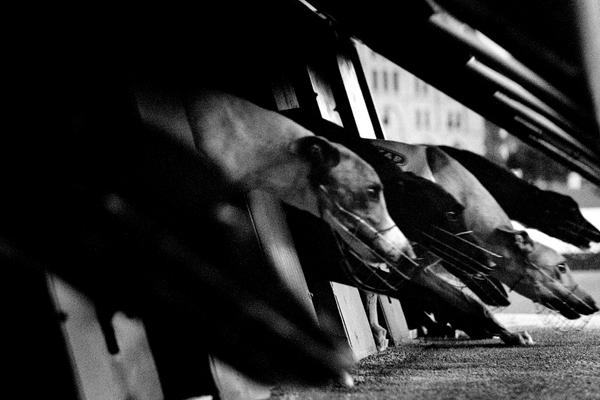Explore Fantastic Beasts in London: a Private Tour
Fantastic Beasts in London
Show Notes:

Your host: Hazel Baker
Hazel is an active Londoner, a keen theatre-goer and qualified CIGA London tour guide.
She has won awards for tour guiding and is proud to be involved with some great organisations. She is a freeman of the Worshipful Company of Marketors and am an honorary member of The Leaders Council.
She has been an expert guest on Channel 5’s Walking Wartime Britain (Episode 3) and Yesterday Channel’s The Architecture the Railways Built (Series 3, Episode 7).
Hazel: Hello and welcome to London Guided Walks London History podcast. In the coming episodes, we will be sharing our love and passion for London, its people, places and history in an espresso shot with a splash of personality. For those of you who don’t know me, I am Hazel Baker, founder of London Guided Walks, providing guided walks and private tours to Londoners and visitors alike.
What do pelicans, parakeets and polar bears have in common?
My favourite London park is also the oldest royal park in London, St James’s. It’s surrounded by three palaces, the Palace of Westminster, more commonly known as the Houses of Parliament, St James’s Palace, built by Henry the Eighth, and Buckingham Palace, the official London residence of the UK sovereigns since Queen Victoria in 1837.
The park’s famous deep flower beds are a particular backdrop to pageants, including trooping the colour. When taking a stroll through this picturesque royal Park, I do try and steal a few moments to go and visit Tiffany, Isla and Gogi, and their new friends sun, moon and star. They are residents of St. James’s Park, and they are also pelicans, great white pelicans to be precise. I still chuckle when witnessing the surprise of passers-by when they see these great birds and then have a double take because they’re actually realising what they are seeing. This isn’t a normal site in London.

These pelicans have the second largest wingspan of all living birds after the albatross, ranging between 2.26 meters which is about seven foot four, to 3.6 meters, which is 11 foot eight. As an usual sight this may be to visitors, pelicans were first introduced to the park in 1666 as a gift to Charles the second from the Russian ambassador. These free roam pelicans are rarely known to stray far from the lake in St. James’s Park. The best places to see them are when they are basking in their favourite sunny spot, by the rocks, by Duck Island cottage. Feeding time is quite the spectacle, which normally occurs every day between 2.30 and 3pm. It’s a chance to really see how magnificent but also, how huge these birds are. The adults weigh from nine to fifteen kilograms, which is about 20 to 33 pounds, and that’s about the same weight as a Cardigan Welsh Corgi. Even though fish is the staple food of these pelicans, they have been known to snack on London pigeons from time to time.
Pelican in St James’s Park eats a pigeon:
London is also home to a healthy population of ringneck parakeets.
These newcomers to London are often taken by surprise by the flash of green caught in the corner of their eye, whilst making the rounds of some of the greener parts of London, Richmond Park, Hyde Park and Greenwich are places where I’ve regularly heard and seen these ringneck parakeets. They have even discovered the bird feeder in my garden and originally designed for the smaller dwindling UK garden birds.

If you ask a random stranger on the streets of London, honouring social distancing protocol, of course, how these bright vibrant green parakeets happened to have made their home in London, you may hear a number of different urban legends delivered as fact. Some say Jimi Hendrix released a pair of parakeets called Adam and Eve into the air around Carnaby Street in 1968. Another popular story is that the parakeets arrived in 1951 with Humphrey Bogart and Katharine Hepburn, when they were filming the African Queen at Isleworth Studios and these parakeets somehow managed to escape. Going back even further, I have heard a tale that they had been escapees of Henry the eighth’s Menagerie, with these iridescent birds having somehow remained hidden for 400 years. However they got here, from 1970 onwards, their numbers boomed. In 1992, 700 birds were recorded in London, and by 1998, 2845 were seen in the London area. And by 2006, the ringneck parakeet was the 15th most sighted bird in London.
Now, you think that these parakeets would suffer during our cold winter months, but they do seem to handle the weather a lot better than some of our locals. They’re flourishing also maybe because they have a 35-year life expectancy, and of course they have very few predators. This enables them to breed freely. Britain’s embattled birds of prey such as owls and peregrine falcons have been known to eat them, they have been accused of stealing the homes of the natives. Parakeets do nest in tree cavities, which are also used by jackdaws, owls and woodpeckers, but there’s little evidence that native species are being muscled out. In their native India, the parakeets are known to cause widespread damaged crops. Perhaps this won’t be a concern in the UK if they stay only to urban areas. If you’ve seen these parakeets in London, then let us know where. For good or for ill, these parakeets, like the grey squirrel, are here to stay.

So, we’ve covered parakeets and pelicans. But what about polar bears?
The Tower of London used to be home to a polar bear. The Roman archery at the Tower of London was probably founded in 1204 when King John brought three shiploads of wild beasts, lions and leopards to England from Normandy. In the early days, most of the animals in the tower came from the northwest of Africa, including leopards, and Lynx, seen by the humanist’s scholar John Keyes in 1561. Keyes sent drawings of them to Conrad Gessner for his historia animalium, and images were reprinted in topsails translation, the history of four-footed beasts and serpents, 1658. But why the Tower of London? The monarch would receive the animals his gifts from usually other powerful rulers at the time, often to impress others or to show the wealth and strength of the ruler. The exotic animals were sent to London from all over the world and kept in the Tower of London as a symbol of power, as well as for the curiosity and entertainment of the court. King Henry the third was particularly credited with establishing the Royal Menagerie at the Tower of London. In 1235, he was given three lions as a wedding gift by the Holy Roman Emperor Frederick the third. And then in 1252, a white bear joined the Royal Collection, and we’re therefore assuming it’s a polar bear. The bear also came with a must have accessory, its own keeper, both were gifts from King Haakon the third from Norway. The Royal beast was one of the luckier animals who lived at the tower. Legend has it that the bear was given a long leash, so it had the freedom to swim and catch fish for its own supper from the River Thames. What a sight that must have made.
One of the biggest animal gifts the Royals received was in 1255. King Henry the third was given a male African elephant from King Louie the ninth of France. It’s suggested that over the years, any elephants that lived in the tower were given wine to drink in the winter months, they believed that this would keep out the cold and warm the elephants up. Londoners flocked to see the novel sight. Although the elephant had a brand new 40 foot by 20-foot elephant house and a dedicated keeper, it died after a couple of years. Many of the other animals did not survive in the cramped conditions. Although lions and tigers fared better, and with many cubs being born, in the 1300’s visitors to the tower would have first crossed a drawbridge to the lion tower, named after the beasts kept there, and even now you see lion sculptures and other animal installations on site to commemorate the former inhabitants of the Tower of London.

In the 16th century, the Menagerie at the Tower of London was open to the public, but this was not without its problems. A lady named Mary Jenkinson had her arm mauled by a lion when she got too close to his cage, and she died shortly afterwards. One of the rooms at the tower featured a furnished room where the tower monkeys lived, and visitors could enter and be amused by their antics. However, the monkeys were removed in 1810 after they tore a boy’s leg off in a dangerous manner. There is also another report of a baboon who managed to get hold of a cannonball while being transported to the tower and threw it at a sailor, killing him. But all things must come to an end. In 1831 after over 600 years of almost continuous operation, the Menagerie at the Tower of London was closed and the animals moved to the newly opened Zoological Gardens in Regent’s Park, now the London Zoo. But it wasn’t just the king who had Fantastic Beasts at his disposal; various members of the royal family kept collections of exotic animals on their estates at Richmond and Kew. During the 1740’s, Frederick, Prince of Wales was sent a pair of zebras from the Cape of Good Hope. The stallion on route sadly died but the male lived at Kew for a good several years. A picture of her by George Edwards was drawn in 1751 and shows her with dark brown stripes on a brownish background, which fades out towards her rump; the correlation of quagga, extinct in 1885, and now considered to have been a subspecies of zebra.
But it wasn’t just royalty who liked to collect these exotic creatures.
From the early 18th century onwards, increasing number of private individuals started collections of exotic animals; these were usually housed on country estates. The Duke of Richmond’s estate, Goodwood, had a Menagerie including wolves, leopards and lioness exhibit, a tiger cat, at least three bears, a white bear, two owls and an armadillo. Among his household pets was a tame, an inoffensive java hare, recorded for posterity in 1747 edition of Mark Catesby’s natural history of Carolina. It was neither a hare nor from Java; it was the first agouti from South America to be recorded in England. In 1738, Captain Craig Hart bought the duke a pair of caribou from Greenland, which was drawn by George Edwards, before being sent to the duke’s estate, in the hope that they might breed. Sadly, they died shortly afterwards.

Hans Sloane was one of the most influential men of early 18th century London.
He amassed one of the greatest private collections of plants, animals and antiquities, coins and other curiosities. He kept a wide variety of exotic animals at his home in Chelsea, where the unusual household pets included a one-eyed Wolverine from Hudson’s Bay. The best-known commercial menagerie of the late 18th and early 19th centuries, was housed on the second floor of the Exeter Exchange on the strand in London, not too far from where Charing Cross Station is now. It was started in 1778 by Thomas Clark and showed some of the first Australian marsupial scene in Britain, this included a bettong, which is a kangaroo cat, a flying phalanger, and a kangaroo. The Exeter Exchange was a building on the north side of the strand, with an arcade extending partway across the carriage way. It was most famous for the Menagerie occupied in its upper floors for about 50 years, from 1773 until its closing in 1829, when it was demolished.

What animals are top of mind if you think of animals in London?
Perhaps it’s the lions at Trafalgar Square, or the pigeons from Mary Poppins film, or perhaps its the dragon surrounding the city of London. What if I told you London had been home to straight tusked elephants, giant deer with antlers almost twice as wide as the deer’s height and several species have now extinct rhinoceros? All of this is true, it just happened a long time ago; 130,000 years to be precise. This was a time when the sea level was low enough to reconnect Britain to the continent, enabling lions and other animals to cross over into Britain. They left when the cold weather increased, and cold loving species such as reindeer, woolly mammoths and woolly rhinoceros replaced them. It’s hard to imagine ice extending as far south as what is now Finchley in North London, and remarkably, Hippo remains in particular, have been found in London in ancient Thames gravels beneath Trafalgar Square, and also at Brentford. For hundreds of years, up to the middle of the 1800’s, Londoners enjoyed blood sports, and of course, that meant the blood of innocent animals, ratting, cockfighting and dog fighting were commonplace in purpose-built arenas attached to inns and taverns. In life in London, the protagonists visit the Westminster pit to see a dog fight against a monkey. It’s described,
“the monkey with its teeth, which met together like a sore, made a large wound in the throat of the dog, as if done with a knife”
And from the great loss of blood, the dogs in general sustained who were pitted against Jacco Macacco, several of them died soon afterwards. The foundation of the Society of the Prevention of Cruelty to Animals in London in 1824, reflected a changing attitude towards such sports.

Greyhound Racing
Betting on animals through the 20th century was also popular, just less bloody. Greyhound racing was the boom spectator sport in the 1920’s. It arrived in London in 1927, when a track was constructed at White City. By 1933, London had 17 Greyhound tracks, attracting just over 9 million Londoners a year. Harringay’s 50,000 seat stadium was built on a spoil tip left by the extension of the Piccadilly line to Finsbury Park. It aimed to be a glamorous dog track, and he said to experimented with racing cheaters. Working animals in London have been a very common sight. Horses had been a staple to London’s success, and the life for many was tough. One of the jobs horses could do was pull omnibuses. George Chiluba who pioneered the omnibus in London in July 1829, having seen its potential on the streets of Paris. Up to 20 people could fit on the benches inside this omnibus, which I suppose is an earlier version of a minibus nowadays. And it’s designed, developed in the second half of the 19th century. Improvements included brakes, but also an extension on the top to allow additional passengers to attend and therefore reduce the price of a ticket. The number of horses used to pull the extra weight of passengers was reduced to two and regular changeover points were needed to replace them with a fresh team. The working life of a London Omnibus horse was estimated at about four years.
All of these stories are quite remarkable. And all of these stories are true and, is only a little taster of the extensive history that London has with animals. If you’ve enjoyed today’s podcast, please do leave a review. If you have any suggestions as what we can be talking about in our next podcast episode, then please let us know.




















